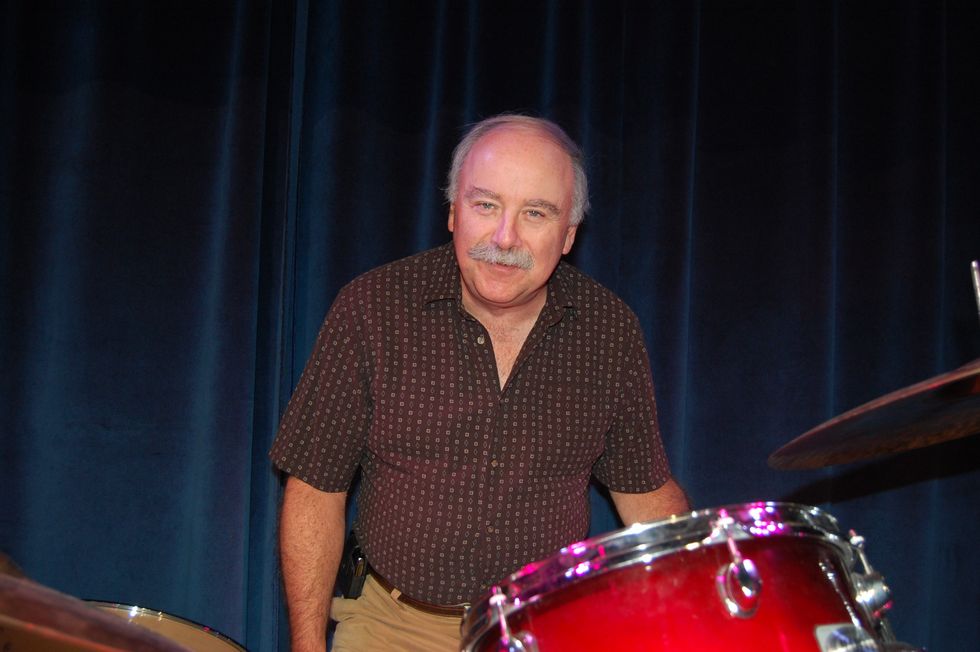Five Questions With… Jim Norris
Canadian Musician has just turned 40 years of continuous publication for the magazine, a remarkable run that shows no signs of ending anytime soon. Here publisher Jim Norris reflects upon the feat, the reasons for its longevity, and the overall growth of the Canadian music industry.

By Jason Schneider
The current issue of Canadian Musician marks 40 years of continuous publication for the magazine, a remarkable run that shows no signs of ending anytime soon. Unlike other music mags, Canadian Musician has woven itself into the fabric of the industry by catering not only to fans but to working musicians by offering reviews of new products and insights into the creative process by notable names.
The man behind it all is publisher Jim Norris who, in the late 1970s, saw an opportunity for such a magazine to thrive in Canada after playing in bands himself for many years. Along with Canadian Musician, Norris launched several other industry-themed publications that eventually formed the basis of his company Norris-Whitney Communications (NWC).
A further move into book publishing led to the popular Music Directory Canada series, along with other educational DVDs and software. And when he’s not attending trade shows around the world, Norris has found time to teach marketing courses at Metalworks Studio in Mississauga and be a part of the Unison Benevolent Fund, the non-profit charitable organization created to help Canadian music industry people in times of personal and financial hardship.
The 40th-anniversary issue of Canadian Musician is on sale now, and for more go to canadianmusician.com.
Congrats on 40 years ofCanadian Musician. What has kept you going compared to other music magazines that have not survived?
Thank you! It’s been quite the journey with its share of ups and downs, but as far as what’s kept us going strong, it comes down to resilience. That’s a trait that’s vital to succeeding in today’s music business, whether for the artists or us and industry pros we serve. We’re very passionate about the Canadian music community in the same way our readers are, and pride ourselves on working closely with them to keep building it and strengthening it together.
Print publications of all types face increasingly serious challenges. Why do you think print still appeals to your readership?
We serve a dedicated audience, and actively engage with our readers and the broader Canadian music community to ensure we’re presenting interesting, insightful, and entertaining content that resonates with people and helps them progress on their path in the music industry, whether that’s someone just earning their stripes, a full-time touring artist, or an industry pro.
And while the print magazine is our flagship product, we’ve also expanded into the digital realm to further our mission. We’ve got a resourceful website, significant social media presence, and have developed initiatives like the CM Radio podcast and our monthly series of free music business webinars with NWC Webinars. All of those initiatives complement the magazine to create an ecosystem that serves a very specific audience with a myriad of helpful content.
Of course, there’s also the simple fact that while the print industry—not unlike the music industry—has had its share of disruptions over the past two decades, it’s evident that neither is going anywhere anytime soon. The democratization of both sectors has certainly forced players to up their game and be the best at what they do, but those that do are having no trouble finding dedicated and eager audiences.
What makes CM unique is your emphasis on new products and technology. How do you envision the process of making music evolving in the coming years?
That’s an interesting question, and—quick plug—one that Kevin Young explores directly in a feature called “The Evolution of the Art” in our current 40th Anniversary Issue. You can check out our interviews from that story with influential artists and producers like Bob Ezrin, Lights, Colin Linden, Hawksley Workman, Sleepy Tom, and a handful of others all addressing this very topic.
I think the most significant trend will involve tools that continue to help people bring to life the melodies and sounds and textures they hear in their head easily and effectively. Plus, technology continues to enable us to collaborate remotely with people around the world with fewer and fewer barriers. In both cases, it’s about removing limitations to creativity and collaboration and letting people focus solely on creating meaningful art in whatever way they see fit.
When the magazine launched in 1979, the Canadian music industry was still in an embryonic stage. What do you think are the most important moments that changed all of that?
Good question. CanCon regulations were in place before we launched in 1979, though we saw increases to the mandated percentages of Canadian content in the ‘80s and ‘90s. The development of significant parts of our arts industry infrastructure, including various granting bodies like FACTOR or provincial and regional music industry associations, has been consistent over the past 40 years. We’ve also seen organizations representing the financial interest of artists like SOCAN either launch or strengthen their reach in that time, and all contribute to a symbiotic and constantly evolving, ecosystem that supports creators and gives them the tools to survive and thrive while making great art and sharing it with the world. There are always challenges to this, though as an industry, I think we’re doing an excellent job of facing and overcoming them together.
And let’s not forget the great music that Canada has produced that has rightfully earned international attention and acclaim on its own merits. From Joni Mitchell to The Guess Who to Neil Young, all the way to Sarah McLachlan, Arcade Fire, Drake, and Alessia Cara, we’ve never had a shortage of great music that, through all kinds of different means, has been embraced by global audiences.
I hate to make you play favourites, but who are some of your favourite artists you've covered over the years?
Yeah, I don’t know that I can choose favourite artists—there have been so many—but I can name some that have been particularly significant on our journey. Burton Cummings graced our first-ever issue in 1979, and he and The Guess Who have been pretty prominent in our pages in the years since. We’ve also had Rush on our cover multiple times in each decade and benefited from their ongoing support. There are national treasures like Liona Boyd, The Tragically Hip, Oscar Peterson, and Alanis Morissette that broke the mold and continue to influence fresh new sounds to this day. It’s also rewarding to put genre-bending artists like Alexisonfire, Lights, Zeds Dead, and Shad on the cover. These are people making music that would’ve been simply unfathomable when we first published in 1979.
We’ve been fortunate also to have many of our favourite musicians write for the magazine over the years, too, like Alex Lifeson from Rush, James LaBrie from Dream Theater, Jully Black, Dan Hill, Kevin Young from Moist, and countless others. And, based on the overwhelming response we got from their fans the last time we featured them, we should shout out Marianas Trench, who will be on the cover of our May/June 2019 issue, which drops in a few weeks!

















